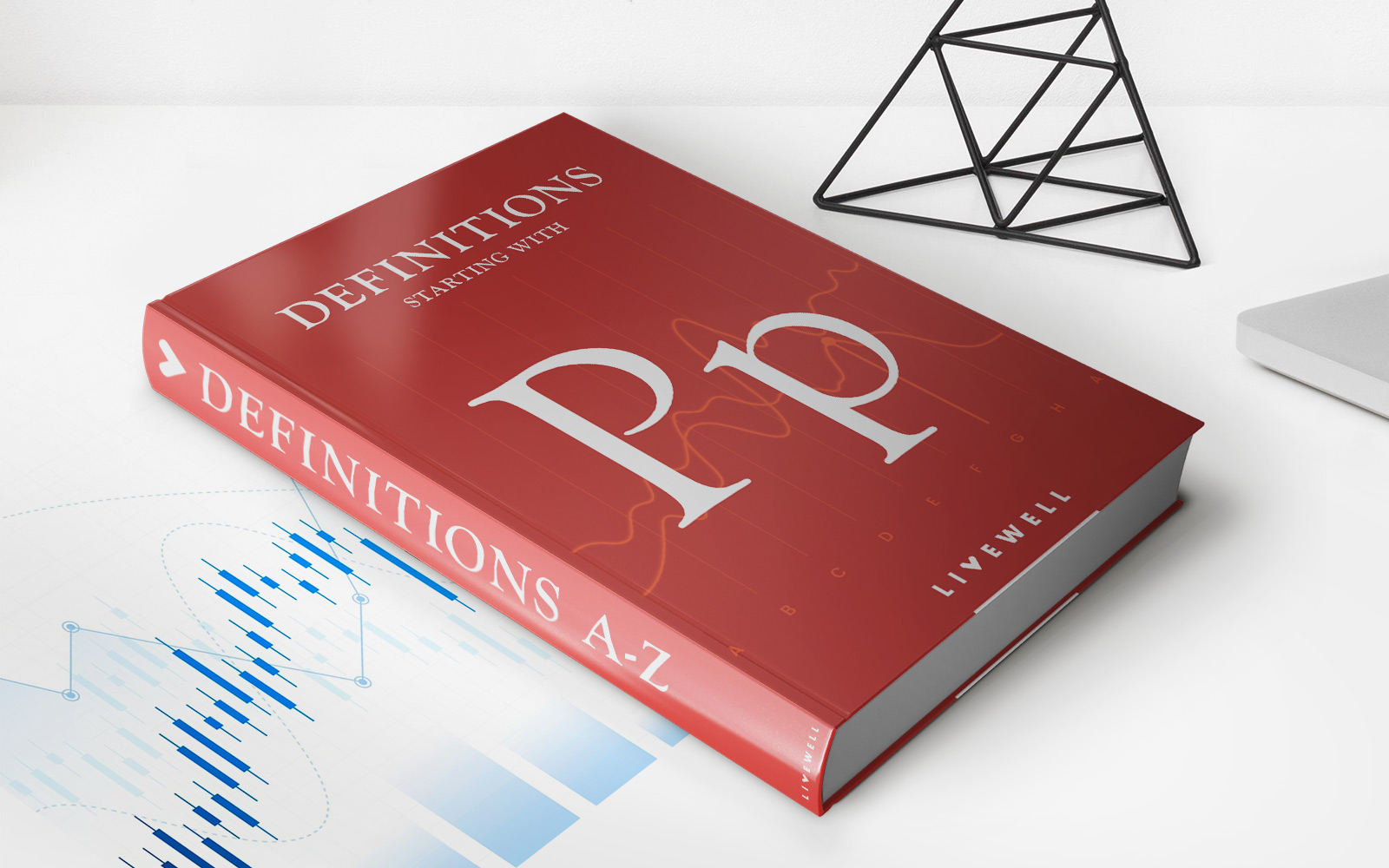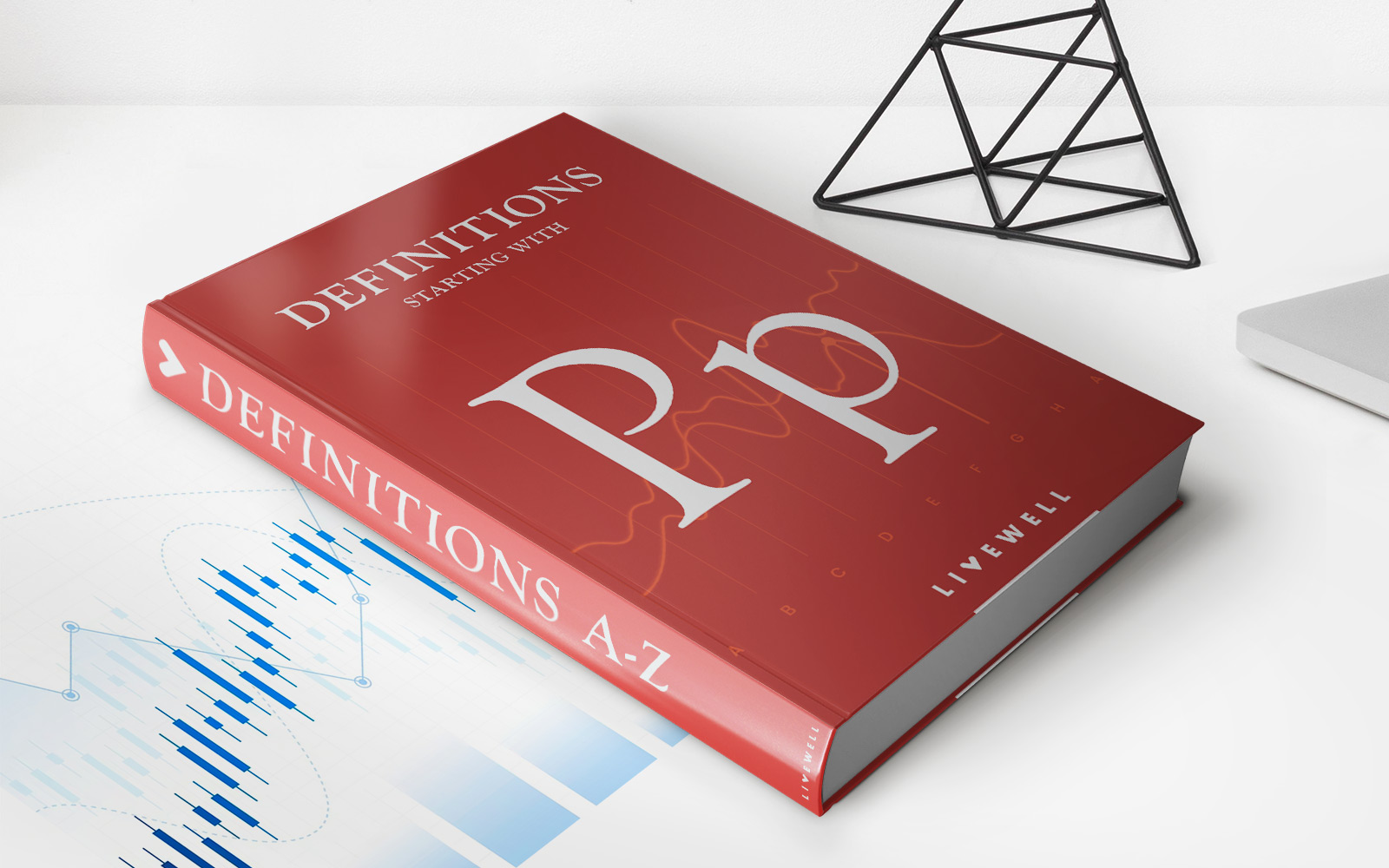

Finance
What Is The Average Life Insurance Payout?
Modified: December 29, 2023
Learn about the average life insurance payout to secure your financial future. Discover how life insurance can provide financial protection when you need it most.
(Many of the links in this article redirect to a specific reviewed product. Your purchase of these products through affiliate links helps to generate commission for LiveWell, at no extra cost. Learn more)
Table of Contents
- Introduction
- Factors Affecting Life Insurance Payouts
- Understanding the Average Life Insurance Payout
- Average Life Insurance Payout by Policy Type
- Average Life Insurance Payout by Age Group
- Average Life Insurance Payout by Gender
- Average Life Insurance Payout by Health Conditions
- Factors to Consider When Choosing Life Insurance Coverage
- Conclusion
Introduction
Life insurance provides financial protection for loved ones in the event of your untimely passing. It serves as a safety net, ensuring that your family can continue to meet their financial obligations and maintain their quality of life. However, understanding the intricacies of life insurance can be challenging, particularly when it comes to the payout process.
In this article, we will explore the average life insurance payout and the various factors that can affect it. By gaining a better understanding of these factors, you can make informed decisions when choosing life insurance coverage.
It’s important to note that the average life insurance payout can vary greatly from one individual to another. This is because several factors come into play when determining the payout amount. The type of policy, age, gender, and health conditions of the insured all play a significant role in determining the payout.
By delving into these factors, we can gain insights into what influences the average life insurance payout and how to effectively navigate the process. Whether you’re considering purchasing life insurance or simply interested in understanding how payout amounts are determined, this article will provide you with the information you need.
Factors Affecting Life Insurance Payouts
When it comes to life insurance payouts, several key factors come into play. Insurance companies take these factors into account when determining the payout amount. Understanding these factors can help you anticipate the potential payout you may receive. Here are some of the main factors that influence life insurance payouts:
- Policy Type: The type of life insurance policy you have will affect the payout amount. There are primarily two types of life insurance: term life insurance and permanent life insurance. Term life insurance provides coverage for a specific period, usually 10, 20, or 30 years. If the insured passes away during the term, the policy pays out the death benefit. Permanent life insurance, on the other hand, provides lifelong coverage and typically includes a cash value component that grows over time. The payout for permanent life insurance policies tends to be higher due to the extended coverage period and potential cash value accumulation.
- Age: Age is a significant factor in determining the life insurance payout. Generally, younger individuals are likely to have lower premiums and higher payout amounts, as they are viewed as less risky by insurance companies. As individuals age, the likelihood of health issues and the risk of mortality increase, resulting in higher premiums and lower potential payout amounts.
- Gender: Gender also plays a role in determining life insurance payouts. Statistics show that women tend to have lower mortality rates compared to men. As a result, women often pay lower premiums and may receive higher payouts compared to men of the same age and health condition.
- Health Conditions: Your health plays a vital role in determining the life insurance payout. Insurance companies assess your health through a medical underwriting process, which typically includes a health questionnaire, medical records review, and sometimes medical examinations. Factors such as pre-existing conditions, chronic illnesses, and lifestyle choices (e.g., smoking) can impact the premium amounts and potentially lower the payout amount.
It’s important to note that these factors are not exhaustive, and different insurance companies may have varying criteria for assessing life insurance payouts. It is advisable to seek guidance from a qualified insurance professional who can provide personalized advice based on your specific situation.
Understanding the Average Life Insurance Payout
The average life insurance payout refers to the typical amount of money that beneficiaries receive when a policyholder passes away. It is important to note that the average payout can vary significantly based on several factors, as discussed earlier. While it is difficult to pinpoint an exact figure for the average life insurance payout, we can provide some insight into what you might expect.
The actual payout amount is determined by the face value, or death benefit, of the policy. This is the amount that the insurance company guarantees to pay out upon the insured individual’s death. Common policy face values range from $100,000 to several million dollars, depending on the individual’s income, financial responsibilities, and overall coverage needs.
Average life insurance payouts can vary widely depending on the policy type and the insured individual’s demographics and health conditions. Term life insurance policies typically have lower average payouts compared to permanent life insurance policies. This is because term policies provide coverage for a specific period and have lower premiums, whereas permanent policies offer lifelong coverage and may have accumulated cash value that contributes to the payout.
Another important factor in determining the average life insurance payout is the insured individual’s age. Younger individuals typically receive higher payouts compared to older individuals, as they are expected to have a longer life expectancy and lower risk of passing away during the policy term. Gender also plays a role, with women often receiving higher average payouts due to their longer life expectancy compared to men.
Additionally, the insured individual’s health conditions play a significant role in determining the average life insurance payout. Individuals with pre-existing conditions or chronic illnesses may receive lower payouts compared to those in excellent health. Insurance companies consider the risk of mortality and adjust the payout amount accordingly.
It’s important to remember that the average life insurance payout is just one factor to consider when choosing coverage. It’s essential to assess your specific financial needs, consider potential future expenses, and select a policy that adequately addresses those needs. Consulting with a knowledgeable insurance professional can help you evaluate your options and make an informed decision.
Average Life Insurance Payout by Policy Type
The average life insurance payout can vary depending on the type of policy you have. Here, we will explore the average payouts for two common types of life insurance: term life insurance and permanent life insurance.
Term Life Insurance: Term life insurance provides coverage for a specified period, typically ranging from 10 to 30 years. It is designed to provide financial protection during a specific timeframe when financial responsibilities, such as mortgage payments or children’s education expenses, are at their peak. Term life insurance policies typically have lower premiums compared to permanent life insurance policies, which means the payout amounts may also be lower.
The average life insurance payout for term policies can vary widely based on the policy’s face value and the insured individual’s age and health conditions. On average, term life insurance policies pay out around $250,000 to $500,000. However, it is important to note that higher face value policies can have significantly higher payouts.
Permanent Life Insurance: Permanent life insurance, as the name suggests, provides lifelong coverage. It includes a cash value component that grows over time, allowing policyholders to accumulate savings. This cash value can contribute to higher payouts compared to term policies.
The average life insurance payout for permanent policies tends to be higher compared to term policies due to the longer coverage period and potential cash value accumulation. On average, permanent life insurance policies can pay out anywhere from $500,000 to several million dollars. The actual payout amount varies based on factors such as the policy’s face value, the insured individual’s age, gender, and health conditions, as well as the length of time the policy has been active.
It’s important to remember that these average payout amounts serve as a general guideline. The actual payout amount may be higher or lower depending on individual circumstances and policy specifics. It is advisable to work with an experienced insurance professional who can guide you through the process and help you select the right type and amount of coverage to meet your specific needs.
Average Life Insurance Payout by Age Group
The average life insurance payout can vary based on the insured individual’s age. Insurance companies consider age as a significant factor when determining the life insurance payout. Here, we will explore how the average payout amount tends to differ among different age groups.
Youth and Young Adults: Individuals in their 20s and 30s typically have lower premiums and higher average payouts compared to older age groups. This is because younger individuals generally have a longer life expectancy, which translates to a lower risk for insurance companies. Insurance companies view younger policyholders as lower-risk customers, resulting in more affordable premiums and potentially higher payout amounts. On average, individuals in this age group may receive payouts ranging from $250,000 to $500,000.
Middle-Aged Adults: As individuals enter their 40s and 50s, the average life insurance payout may decrease slightly. This is because the risk of mortality increases as individuals age, and insurance premiums tend to be higher compared to younger age groups. The average payout during this age range can range from $200,000 to $400,000, depending on various factors such as policy type, health conditions, and coverage amount.
Seniors: Individuals in their 60s and beyond may experience a further reduction in average life insurance payouts. As older individuals are more prone to age-related health issues and have a higher risk of mortality, insurance companies adjust the premiums and payout amounts accordingly. The average life insurance payout for seniors can range from $100,000 to $300,000.
It is important to note that these average payout amounts serve as general estimates. The actual payout amount will vary based on the specific policy, the insured individual’s health conditions, and other factors. Additionally, individuals may opt for different coverage amounts based on their financial obligations and goals, which can impact the payout amounts.
When considering life insurance coverage, it is crucial to evaluate your unique needs and consult with an insurance professional who can guide you in selecting an appropriate policy. Assessing your financial responsibilities, future plans, and overall budget can help you determine the right coverage amount and premium options that align with your specific circumstances.
Average Life Insurance Payout by Gender
Gender is a significant factor that can influence the average life insurance payout. Statistics have shown that there are differences in life expectancy and mortality rates between men and women, and insurance companies take these factors into consideration when determining premiums and payout amounts.
On average, women tend to have higher life expectancies compared to men. As a result, women often pay lower premiums for life insurance and may receive higher average payouts compared to men of the same age and health conditions.
Insurance companies use actuarial tables and statistical data to assess the risk of mortality for different demographic groups, including gender. Based on these calculations, they determine the premiums and payout amounts. The average life insurance payout for women can range from $250,000 to $500,000, depending on various factors such as age, policy type, and health conditions.
For men, the average life insurance payout may be slightly lower compared to women. On average, men may receive payouts ranging from $200,000 to $400,000. This is because men generally have slightly lower life expectancies compared to women, which translates to a slightly higher risk for insurance companies. However, it’s important to note that these differences in average payouts based on gender may vary depending on other individual factors, such as age, health conditions, and coverage amount.
It is essential to remember that life insurance payouts are determined on an individual basis. The actual payout amount will depend on various factors such as the policy’s face value, the insured individual’s age, health conditions, and other individual circumstances.
When considering life insurance coverage, it is crucial to assess your specific needs and goals. Working with an experienced insurance professional can help you navigate the process, compare different policies, and select the coverage that best suits your individual circumstances, regardless of gender.
Average Life Insurance Payout by Health Conditions
The health condition of the insured individual is a significant factor that can impact the average life insurance payout. Insurance companies evaluate the health of applicants through a process called medical underwriting to assess the risk of mortality. This assessment helps determine the premiums and payout amounts for life insurance policies.
Individuals with excellent health generally receive more favorable rates and potentially higher average payouts. On average, individuals with no pre-existing conditions or chronic illnesses may receive life insurance payouts ranging from $250,000 to $500,000, depending on other factors such as age and policy type.
If an individual has pre-existing conditions or chronic illnesses, insurance companies may view them as higher risk and adjust the premiums and payout accordingly. Individuals with health conditions such as diabetes, heart disease, or cancer may receive lower average payouts in comparison to those in excellent health.
The actual impact of health conditions on the average life insurance payout can vary. It depends on factors such as the severity of the condition, the treatment plan in place, and the overall prognosis. Insurance companies take into account the risk associated with the health condition when determining the premium rates and payout amounts.
It’s important to note that while individuals with certain health conditions may receive lower average payouts, they still have options for obtaining life insurance coverage. Some insurance companies specialize in providing coverage for individuals with pre-existing conditions, offering policies specifically designed to meet their needs.
If you have specific health conditions, it is recommended to work with an insurance professional who can assist you in finding the right insurance company and policy that aligns with your specific health situation. They can help you navigate the underwriting process, explore different policy options, and determine the most suitable coverage for your needs.
Remember, life insurance is designed to provide financial protection and peace of mind for individuals and their loved ones. While health conditions may influence the average payout, it is still possible to find adequate coverage that meets your specific requirements and provides the necessary financial support in the event of your passing.
Factors to Consider When Choosing Life Insurance Coverage
When selecting life insurance coverage, several factors should be taken into consideration to ensure that you choose the policy that best suits your needs and provides adequate financial protection for your loved ones. Here are some key factors to consider:
- Financial Obligations: Assess your financial obligations, such as mortgage payments, debts, and ongoing expenses. Determine the amount of coverage needed to ensure that your loved ones can maintain their current lifestyle and meet these financial responsibilities in the event of your passing.
- Policy Type: Evaluate the different types of life insurance policies available, such as term life insurance and permanent life insurance. Consider the pros and cons of each type in relation to your specific needs and goals.
- Policy Duration: If you opt for term life insurance, consider the duration of coverage that aligns with your financial obligations. Determine how long you need the coverage and choose a term length accordingly.
- Premium Affordability: Assess your budget and determine how much you can comfortably afford to pay in premiums. Consider the long-term affordability of the premiums to ensure that you can sustain the policy over its duration. It’s also worth comparing premiums from different insurance providers to find the most competitive rates.
- Beneficiary Designation: Carefully select your beneficiaries and make sure they are appropriately designated in your life insurance policy. This ensures that the payout goes to the intended beneficiaries in a timely manner.
- Health Conditions: Take into account your current health conditions and how they may impact the premium rates and potential payout amounts. Consider whether it is necessary to undergo medical underwriting or opt for policies that do not require medical examinations.
- Additional Riders: Explore additional policy riders or options that can enhance your coverage. Examples include critical illness riders or waiver of premium riders, which provide additional benefits in case of specific events or conditions.
- Insurance Provider Reputation: Do research on the insurance company’s reputation, financial stability, and customer service track record. Opt for a reputable and well-established provider to ensure that your policy is secure and that the claims process will be smooth for your beneficiaries.
- Professional Guidance: Consider working with a licensed insurance professional who can assess your needs, explain the different policy options available, and provide personalized advice based on your specific circumstances. They can help you navigate the complexities of life insurance and choose the most suitable coverage.
Remember, life insurance is a crucial component of your financial planning. Take the time to evaluate these factors and make an informed decision that provides the necessary protection for your loved ones and aligns with your long-term goals.
Conclusion
Choosing the right life insurance coverage is an important decision that requires careful consideration of various factors. Understanding the average life insurance payout and the factors that affect it can help you navigate the process with confidence and make informed decisions.
Factors such as policy type, age, gender, and health conditions all play a significant role in determining the average life insurance payout. Term life insurance policies typically have lower average payouts compared to permanent life insurance policies, and younger individuals generally receive higher payouts compared to older individuals.
Gender also influences the average life insurance payout, with women often receiving higher payouts due to their longer life expectancies. Health conditions can also impact the payout, with individuals in excellent health receiving more favorable rates and potentially higher average payouts.
When choosing life insurance coverage, take into account your financial obligations, the type of policy that suits your needs, the duration of coverage, and the affordability of premiums. Designate your beneficiaries properly, consider additional policy riders, and evaluate the reputation of insurance providers. Seeking guidance from an insurance professional can help you navigate the process and ensure that you select the most suitable coverage.
Remember, life insurance provides valuable financial protection for your loved ones in the event of your passing. By understanding the factors that influence the average life insurance payout, you can make an informed decision and secure the necessary coverage to provide peace of mind for you and your family.














